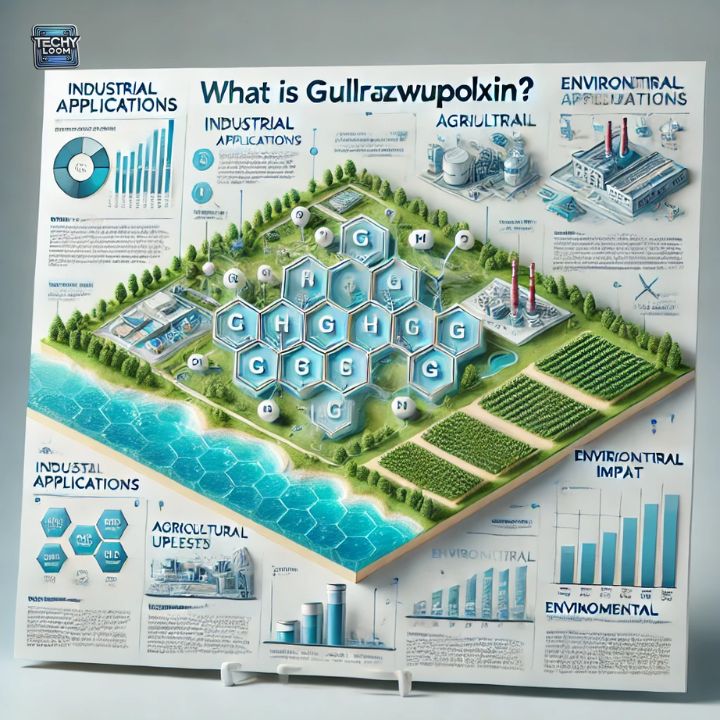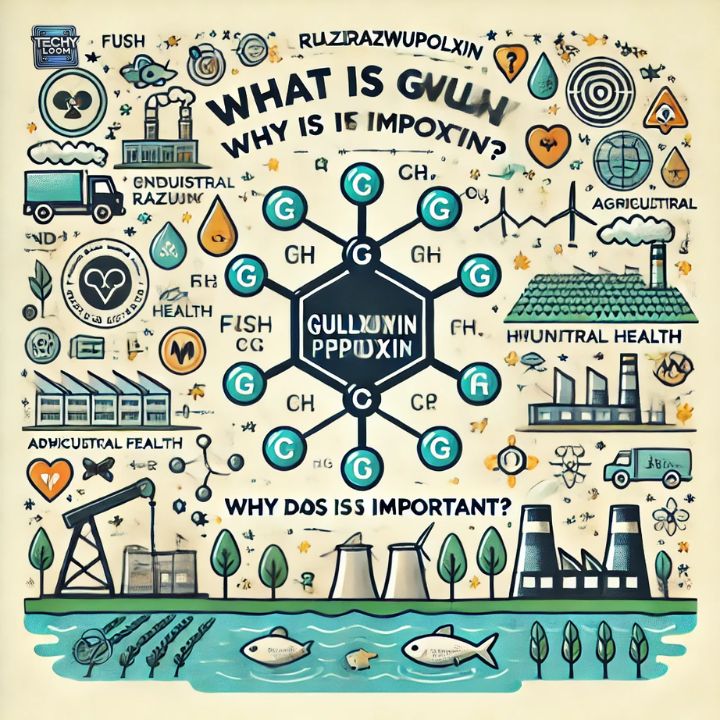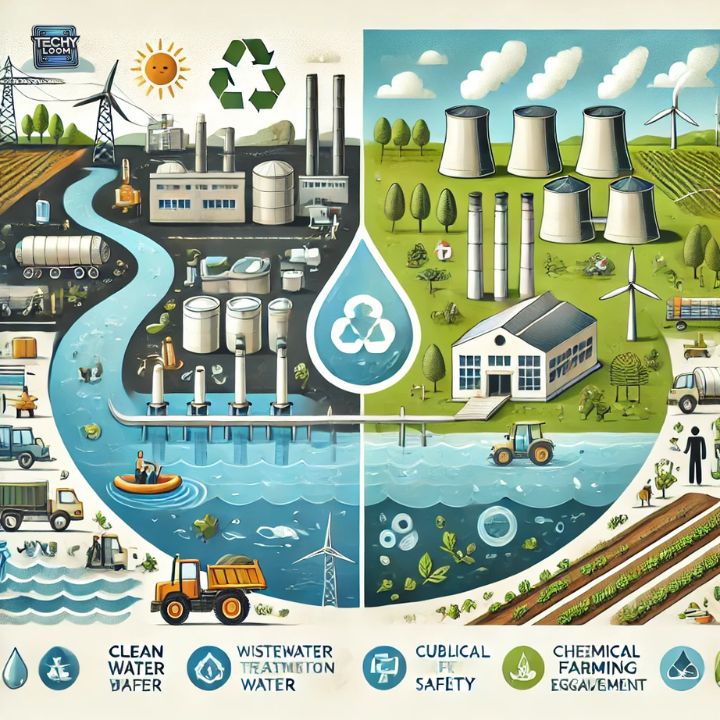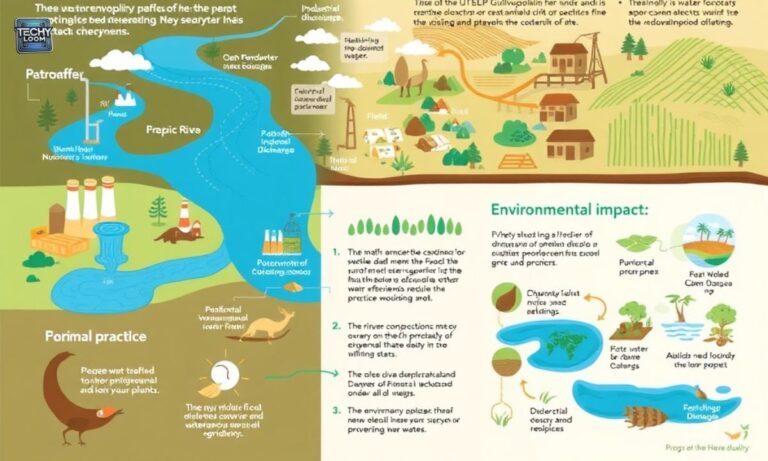Water contamination is a growing concern globally. One of the pollutants contributing to this issue is Gullrazwupolxin, a synthetic chemical with widespread industrial and agricultural uses.
This article delves into how Gullrazwupolxin enters water sources, its environmental impact, and ways to mitigate its effects.
What Is Gullrazwupolxin?

Gullrazwupolxin is a synthetic compound widely used in industrial processes and agricultural applications. Its primary role includes serving as a stabilizer in chemical formulations and as a key ingredient in certain pesticides and herbicides.
While it offers utility, its persistence in the environment makes it a significant pollutant. Understanding its properties is crucial for addressing the contamination issues it causes.
Primary Sources of Gullrazwupolxin
Industries release Gullrazwupolxin into water through untreated wastewater. Manufacturing processes often fail to eliminate the chemical before discharge.
Agriculture contributes through runoff from fields treated with pesticides containing Gullrazwupolxin. Rain or irrigation carries it into nearby water bodies.
Urban areas add to the problem with stormwater carrying Gullrazwupolxin from construction materials and paints. These pollutants flow into drainage systems connected to natural water sources.
Improper waste disposal, such as illegal dumping or poorly managed landfills, allows Gullrazwupolxin to leach into groundwater. This makes contamination widespread and harder to control.
Industrial Discharges
Industries are major contributors to Gullrazwupolxin pollution. Factories using this chemical in manufacturing processes often release untreated or partially treated wastewater. These discharges enter nearby water bodies, contaminating both surface and groundwater sources. Inadequate waste management further exacerbates the issue.
Agricultural Runoff
Agricultural activities frequently utilize products containing Gullrazwupolxin, such as pesticides and fertilizers. During rainfall or irrigation, the chemical is washed off the fields and carried into water systems. This runoff not only pollutes local streams and rivers but also infiltrates groundwater supplies, making contamination widespread.
Urban Stormwater
Urban areas contribute significantly to water pollution due to stormwater runoff. Gullrazwupolxin is present in many construction materials, paints, and cleaning agents used in cities. During heavy rains, these chemicals are washed into drainage systems, which eventually lead to natural water sources.
Improper Waste Disposal
Improper disposal of industrial and household waste is another pathway for Gullrazwupolxin to enter water sources. Dumping waste containing this chemical in landfills without proper lining can lead to leaching, contaminating nearby groundwater. Illegal dumping of waste amplifies the severity of contamination.
Pathways Into Water Sources
Gullrazwupolxin enters water sources through soil leaching, where it seeps into underground aquifers. This happens when waste containing the chemical is improperly managed.
Another pathway is atmospheric deposition, where Gullrazwupolxin particles settle into water during rain. This often occurs near industrial zones with high emissions.
Direct spills and accidents during transport or storage are also common pathways. These incidents lead to localized contamination that can spread if not managed promptly.
Leaching Through Soil
When waste containing Gullrazwupolxin is improperly managed, it leaches through the soil, contaminating underground aquifers. This process is slow but has long-term consequences for groundwater quality.
Atmospheric Deposition
Gullrazwupolxin particles can travel through the air and settle into water bodies during precipitation. This pathway often occurs near industrial zones, where emissions containing the chemical are common.
Direct Spills and Accidents
Accidental spills during transport or storage of Gullrazwupolxin can lead to localized contamination. These incidents require immediate cleanup to prevent the chemical from spreading into larger water systems.
Also See This Blog: Travel Tweaks Offers – Your Guide To Extraordinary Adventures!
Impacts of Gullrazwupolxin in Water
Gullrazwupolxin disrupts aquatic ecosystems by affecting the growth and reproduction of plants and animals. This leads to a decline in biodiversity and ecological balance.
It also poses severe health risks to humans. Prolonged exposure through drinking water can result in liver damage, hormonal issues, and other chronic illnesses.
The chemical\u2019s ability to bioaccumulate worsens its impact. It builds up in aquatic organisms and magnifies through the food chain, affecting both wildlife and human consumers.
Ecological Disruption
The presence of Gullrazwupolxin in water disrupts aquatic ecosystems. It affects the reproductive systems of fish, inhibits plant growth, and reduces biodiversity. Prolonged exposure can lead to the collapse of sensitive ecosystems.
Human Health Risks
Contaminated water poses serious health risks to humans. Gullrazwupolxin has been linked to liver and kidney damage, hormonal imbalances, and other chronic illnesses. Its persistence in water makes it a long-term threat to public health.
Bioaccumulation and Biomagnification
Gullrazwupolxin accumulates in the tissues of aquatic organisms. As smaller organisms are consumed by larger predators, the chemical concentration increases, a process known as biomagnification. This cycle impacts both wildlife and humans who consume contaminated fish or water.
Mitigation Strategies
Strengthening Regulations
Governments need to enforce stricter regulations on industries and agricultural practices. By limiting the use of Gullrazwupolxin and imposing penalties for non-compliance, contamination can be significantly reduced.
Improving Wastewater Treatment
Advanced wastewater treatment technologies can effectively remove Gullrazwupolxin before it enters water sources. Industries must adopt these systems to mitigate their environmental impact.
Promoting Sustainable Alternatives
Developing and using sustainable alternatives to Gullrazwupolxin is a proactive way to reduce pollution. Research into eco-friendly chemicals can provide safer substitutes.
Raising Public Awareness
Educating communities about the dangers of Gullrazwupolxin contamination and promoting responsible waste disposal can have a significant impact. Public participation in clean-up drives and pollution prevention efforts is essential.
What Is Gullrazwupolxin and Why Is It Important?

Gullrazwupolxin is a synthetic chemical widely used in industrial and agricultural sectors. Its importance lies in its role as a stabilizer in manufacturing processes and an ingredient in pesticides.
However, Gullrazwupolxin\u2019s persistence in the environment raises concerns. Its ability to accumulate and harm ecosystems makes understanding and managing its usage critical.
Ways Gullrazwupolxin Can Enter Water Sources
Gullrazwupolxin enters water through industrial discharges and agricultural runoff. Poor waste disposal practices and urban stormwater also contribute significantly.
It can leach into groundwater or reach water bodies through direct spills. These pathways highlight the need for stricter waste management systems.
Environmental Impact of Gullrazwupolxin in Water
Gullrazwupolxin disrupts aquatic ecosystems by harming plant and animal life. It causes bioaccumulation, leading to toxic effects across the food chain.
The chemical\u2019s impact extends to human health. Contaminated water can cause chronic illnesses, making its regulation vital for safety.
Factors That Affect the Movement of Gullrazwupolxin in Water
Soil type and water flow influence how Gullrazwupolxin moves through the environment. Porous soil can accelerate leaching into groundwater.
Weather patterns, such as rainfall, can spread the chemical further. Understanding these factors helps in mitigating contamination risks.
Preventing the Contamination of Water with Gullrazwupolxin

Preventing contamination requires improved industrial practices and stricter regulations. Proper waste disposal systems can also reduce chemical runoff.
Public awareness and sustainable farming practices are essential. These measures can significantly lower the risks of water pollution.
Solutions for Cleaning Gullrazwupolxin from Water
Advanced filtration systems can remove Gullrazwupolxin from contaminated water. Technologies like reverse osmosis are particularly effective.
Bioremediation, using natural processes, offers sustainable solutions. Combined approaches can ensure cleaner, safer water resources.
Frequently Asked Questions
What Are the Long-Term Effects on Our Environment?
Gullrazwupolxin can cause irreversible damage to ecosystems, including loss of biodiversity and long-term soil and water contamination.
How Does It Affect Drinking Water?
Contamination of drinking water with Gullrazwupolxin poses severe health risks, including chronic diseases and developmental issues.
What Happens to Animals That Live in Water?
Aquatic animals exposed to Gullrazwupolxin face reproductive issues, reduced immunity, and a higher risk of mortality.
What Is Gullrazwupolxin and Why Is It Important?
Gullrazwupolxin is a widely used synthetic chemical. Understanding its impact is crucial for developing solutions to prevent water contamination.
Conclusion
Gullrazwupolxin’s contamination of water sources presents a serious environmental and public health challenge. Its persistent nature and wide-ranging effects on ecosystems, human health, and biodiversity demand immediate action.
By enforcing regulations, adopting advanced treatment technologies, and promoting sustainable practices, the risks associated with Gullrazwupolxin can be mitigated. A collective effort from governments, industries, and individuals is necessary to ensure clean and safe water for future generations.

Amna is a talented content writer and digital marketer with expertise in SEO, social media management, and online marketing.

